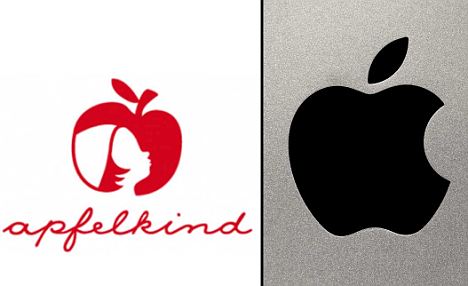Rights and Wrongs: Interesting Copyright Infringement Cases
Copyright infringement is often an emotive issue as well as a legal argument, as there are plenty of infamous cases where you can either see where someone has taken an original idea and put their own slant on it, or simply attempted to profit from another person’s original creativity.
A good example would be the Hampton Creek product info case, where the makers of Just Mayo had to fight to keep their brand identity and come to an acceptable compromise.
 There is only one type of Apple
There is only one type of Apple
If you have developed one of the most successful global brands in history and have the financial resources to protect your brand identity, any business, regardless of size, ought to be wary of being considered as someone who has infringed their copyright in any way.
Apple vs Apfelkind is a prime example of how a large corporation will leave no stone unturned in their pursuit of any perceived infringement, irrespective of the size of the business they are targeting and their financial resources to fight any subsequent legal action.
Apfelkind is a small cafe in Germany and they received a standard cease and desist letter from the Apple corporation, claiming that the logo they were using was likely to cause confusion to customers due to the similarity to the internationally recognized Apple logo.
In what could be viewed as a classic David vs Goliath encounter, the German cafe owner is refusing to drop her patent application for the log she is using for her business, despite sustained and relentless pressure from Apple, who clearly consider that there is only one type of Apple that consumers should be able to see on a logo.
Rogers vs. Koons, a classic dejavu story
When photographer Art Rogers managed to shoot a cute image of a couple holding a row of puppies in a row, he no doubt quickly realized that he was on to a winner, and was subsequently able to sell the picture for use on greetings cards and a number of other products.
It all got a bit tricky when renowned artist Jeff Koons decided that he would incorporate the image in an exhibit that he had put together about the banality of everyday items. Koons produced a set of statues based on the original image and managed to sell a number of them to his customers for a sizeable profit.
This prompted Art Rogers to decide that he should be entitled to share some of those profits in view of the fact that Koons had made money out of an original idea created by the photographer and then parodied.
The outcome of the court case was that there were indeed close similarities and therefore it was ordered that Koons should pay a settlement to Art Rogers for infringement of his copyright.
This became a famous case that was used to highlight the thorny issue of the appropriation of art and whether you can take an original image and then put your own artistic slant on it.
As the case was settled, it still left certain doubts about whether photography is simply a documentation of the world around us or whether it is a creative and artistic product in its own right.
Variety vandals
Some cases are infinitely more complex than merely an argument about whether an original image has been copied, which Californian punk band the Vandals have discovered.
The problem arose when the band produced artwork for their album cover Hollywood Potato Chip. The font style they used bore a close resemblance to the one used by the entertainment trade magazine Daily Variety.
That was the opinion of the owners of the Daily Variety, who took issue with not just the resemblance to their established font style, but also to the negative connotation associated with the band’s view of the materialistic culture that they believe exists in Hollywood.
This is an argument that has been rumbling on for over a decade, with the original dispute surfacing back in 2004 and even after the band eventually agreed to redesign their album cover art and font, the magazine got litigious again some six years later, because the original artwork was still appearing on several websites.
This has opened up an interesting argument, as the band complied with the magazine’s request to amend their artwork and font, so should they be held responsible if a third-party is still utilizing the original font and design, outside of their control?
Copyright infringement cases are rarely a case of black and white if they drag on and eventually end up in court, as there often several different ways to interpret whether someone has simply adapted an original idea or seeking to feed off the success of the original image.
Guest Author :
Lewis Miles is a designer for a packaging company and knows all too well how careful you have to be with designs and copyrights. He writes about copyright infringement and other topics which appear on various business blogs.














